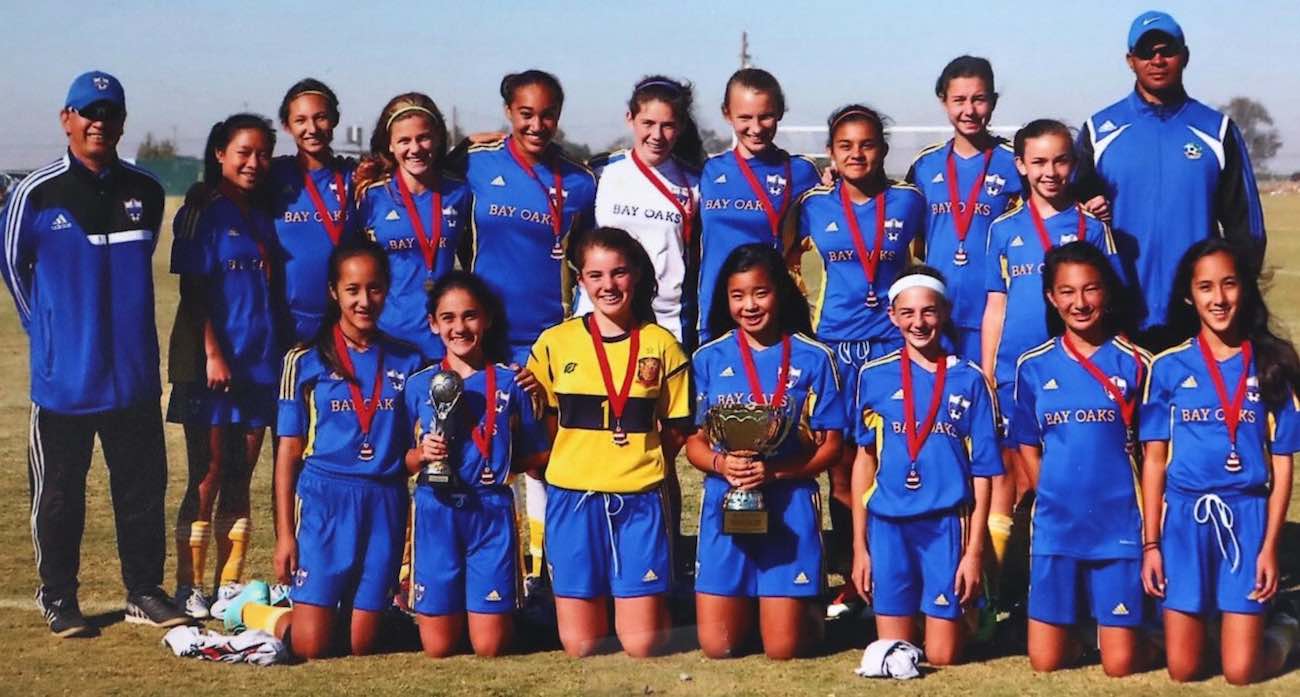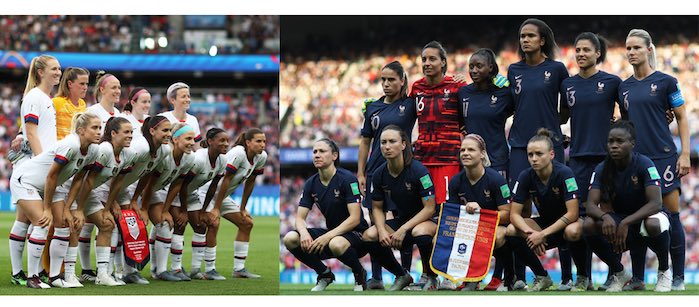 (Photo: Naomi Baker - FIFA/FIFA via Getty Images)
(Photo: Naomi Baker - FIFA/FIFA via Getty Images)
As an obsessed fan who played soccer for over a decade, I’ve spent the summer closely following the Women’s World Cup, which wraps up this Sunday. But one thing has been preventing me from rooting for the United States: the team has so little racial diversity.
Only a small handful of the USWNT are not white.
While the rest of the U.S. has been caught up in World Cup mania — buying jerseys with “Morgan” emblazoned across the back or obsessively tracking President Donald Trump’s tweets directed at Megan Rapinoe — I’ve been watching from the fringes.
Don’t get me wrong: I have so much respect for the USWNT. They’ve won four Olympic Gold Medals and three World Cup Championships. On top of that, they’re fighting for equal pay, showing that women in every field (literal and figurative) face gender discrimination.
I grew up playing soccer with girls of every racial and ethnic background. Sometimes I’d play against teams that spoke exclusively Spanish. My own team had a huge jumble of black, Latina, Asian, white, and mixed-race players.

When I tuned into the highly-anticipated U.S. vs. France game last Friday, I was shocked and thought to myself: only one black player — defender Crystal Dunn — in the starting line up?
Granted, I played soccer in California, which is one of the most diverse states in the country. I don’t expect teams from other parts of the U.S. to look the way mine did. But the U.S. is 60.4% white. That means two out of every five Americans is not white — the USWNT is far from that diverse.
The lack of diversity is even more noticeable when my friends and I compared the USWNT with other national teams at the World Cup, especially host France, knocked out by the U.S. in the quarterfinals.

The issue of diversity in U.S. soccer — not just on the USWNT, but at every level of the sport — is starting to grab more people’s attention. In a recent interview with Sports Illustrated, Dunn talks about how expensive soccer can be: “You’re traveling to all these tournaments, the equipment is expensive, [and] being part of a club you have to pay all these fees. That’s where we kind of have it backwards in the U.S.” Dunn said she was oftentimes the only black player on her team. And in 2018, former USWNT goalkeeper Hope Solo called soccer a “rich, white kid sport.”
There’s more diversity on the #USWNT — but there’s still a long way to go, @elindsay08 explains:https://t.co/Y638kO8x6t pic.twitter.com/oURDkfKhZM
— The Equalizer (@EqualizerSoccer) July 2, 2019
This question of access and affordability strikes at the heart of the issue. I know the lack of diversity in the USWNT can’t be blamed on the players. My parents shelled out more than $3,000 a year to pay for my travel, soccer gear, and coaches, all so that I could play the sport I love. And even though I played in a league that had a lot of racial diversity, we all came from families who could afford the expenses.
When the U.S was playing against Thailand, I was texting one of my former teammates, and she said something that really stuck with me: “U.S. soccer [has] literally terrible structure! You know all those players are mostly suburban soccer girls and they’re all super good but they’re not the only soccer talent out there!”
Our experience playing youth soccer has shown us that there is a lot of other talent out there. Right now, the USWNT only represents a small — and very white — slice.